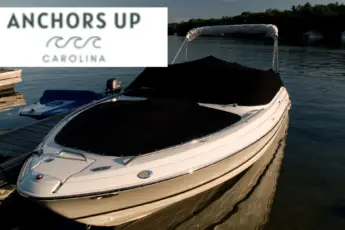One of the most infamous signs of trouble in an outboard or outboard/inboard engine is milky oil in the lower unit. Yes, it’s true; motor oil turns to the color of milk when it is mixed with water. Of course, the water is not intended to be in the lower unit. Without question, the situation must be addressed quickly. Contaminated lower unit oil spells disaster and will likely leave you stranded on the water. Here is what milky lower unit oil means.
What Does Milky Lower Unit Oil Mean
Without question, milky oil in the lower unit spells a disaster waiting to happen. The oil turns a milk color as a result of water intrusion.
Water intrusion no matter if it is saltwater or freshwater is alarming and must be addressed immediately. Conversely, the issue often goes undetected as you cannot see lower unit oil visibly. Instead, the problem is found only when changing lower unit oil on scheduled maintenance intervals. Therefore, the problem may have been long-standing before it was found, thus increasing the likelihood of damage to internal components.
In the event that the lower unit oil is discolored, it is essential to have the problem addressed before heading back on the water. Undoubtedly you do not want to be left stranded on the water.
What Causes Milky Gear Oil
Milky gear oil is a result of many factors, and it is essential to determine the exact reason so that it can be adequately repaired.
Water penetrating the lower unit of an outboard or inboard motor is most like caused by the following.
Faulty Gaskets
The lower unit of a watercraft is complex. Consider that power is transferred from the engine and down the motor shaft to turn the propeller.
An outboard engine or inboard/outboard engine is not one solid piece. Instead, it is multiple pieces joined together. Anytime one piece connects to another, especially in water, you risk water intrusion.
Gaskets are a mating point between one piece of the lower unit and another. A faulty or worn-out gasket results in water intrusion. However, the severity of the leaking lower unit is highly dependent on the condition of the gasket.
Bad Seals
Similar to gaskets, seals are a major component in preventing water from entering the boat lower units. Two of the most notable seals beneath the waterline are the oil drain and fill screws. This is where the lower unit oil pump connects.
Drain and fill seals like other seals in the lower unit, when damaged or worn, result in water intrusion. Lower unit seals and gaskets can be purchased in a complete kit. When you find milky lower unit oil it is critical to change all of the gaskets and seals as it is hard to determine the exact cause of the problem.
Damaged Lower Unit Housing
It should be noted that seals and gaskets are not always the cause of lower unit water intrusion.
Boat operators run aground accidentally. One of the lowest points of a boat beneath the waterline is the lower unit. As a result, it is the most likely to come in contact with the seafloor below.
Unfortunately, strikes to the lower unit can cause milky lower unit oil. The impact jars the lower unit, thus setting it off balance and perhaps even minimal weep of water entering and contaminating the oil. After running aground, I recommend inspecting the lower unit oil for water.
I personally had lower unit water intrusion in my Mercury outboard engine. The seals and gaskets all required replacing as I didn’t want to put myself at risk of the lower unit seizing. In my situation, I was operating in saltwater.
Always Change The Water Pump
At any point when the lower unit is removed from the engine shaft, it is critical to replace the water pump.
Without question, the water pump or impeller is easily accessed when dropping the lower unit. Avoid running into an overheating situation. When the seals and the gaskets are in the process of being replaced, add the impeller to the list.
Lower Unit Freeze Damage
For me, I don’t need to worry about my lower unit freezing because I live in the south, where temperatures rarely dip below 32 degrees.
Lower unit water intrusion and freezing temperatures do not mix. Unfortunately, lower unit housing are prone to cracking when temperatures dip below freezing and water enters the oil.
Without question, a cracked lower unit is an expensive repair but a necessity. While yes the lower unit is removable, the cost to replace this component of an outboard or inboard/outboard motor is costly. We are talking about thousands, not hundreds of dollars. Therefore, if you suspect water intrusion, drain the oil at the onset of freezing temperatures. Importantly remember to refill before heading out on the water again.
Milky Lower Unit Oil Spells Disaster
The next time you change your boat, lower unit oil and spot a milky color, you need to get to the bottom of the situation. Never run the watercraft with milky oil as you risk seizing the critical moving parts. If you’re not mechanically inclined, leave the work to the experts. Marine mechanics will get you back up and running in short order.








